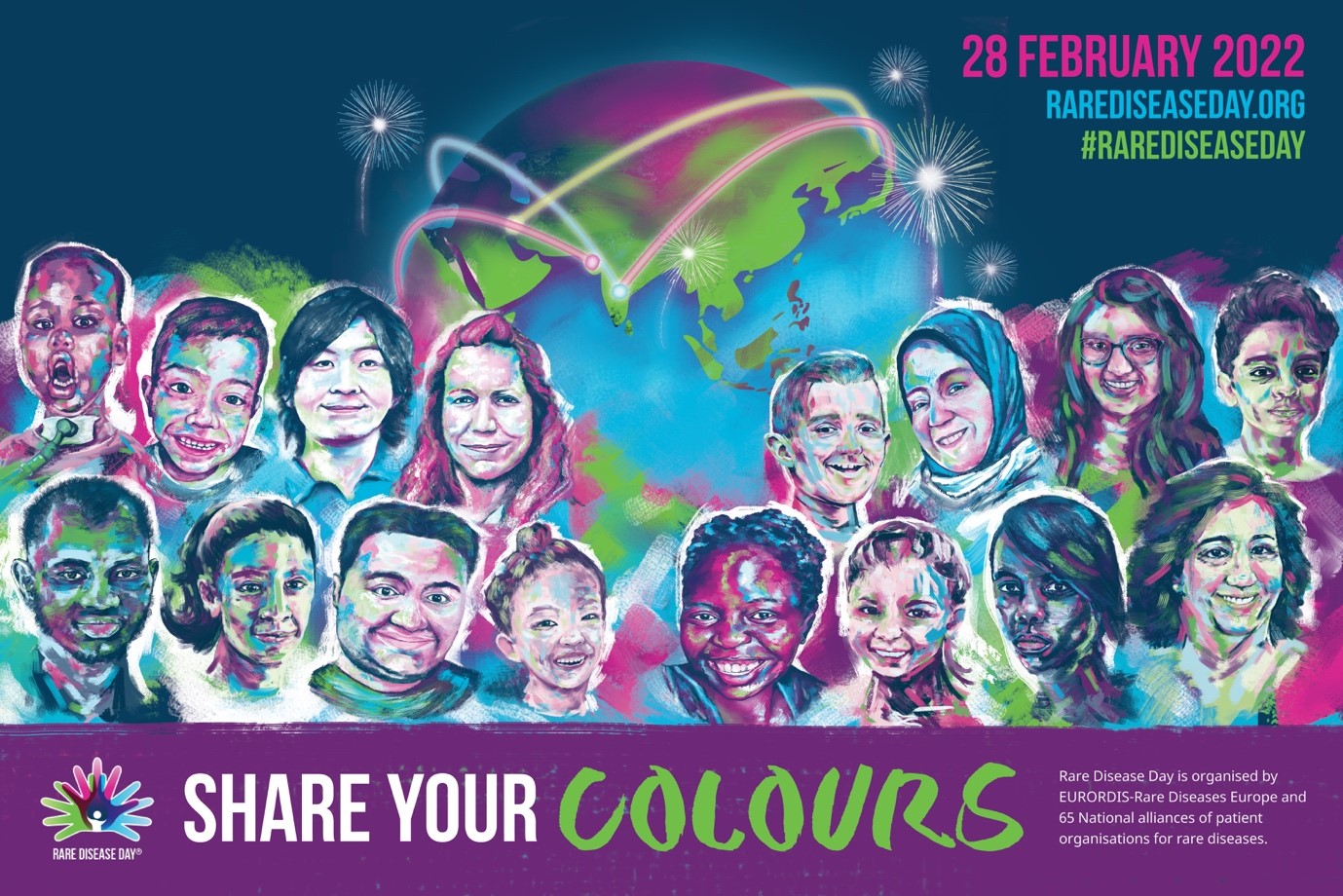- Diseases are considered rare when their incidence in the population is less than 1:2000 and more than 6000 diseases are catalogued as rare (EURORDIS - European Rare Diseases, https://www.eurordis.org/about-rare-diseases).
- Worldwide, rough estimations indicate that more than 300 million people (or 3.5-5.9 % of the global population) are affected by rare diseases. (https://www.rarediseasesinternational.org).
- In Germany, more than 4 million individuals are affected by rare diseases according to Alliance for Chronic Rare Diseases (Allianz Chronisch Seltener Erkrankungen, ACHSE e.V.) https://www.bundesgesundheitsministerium.de/fileadmin/Dateien/3_Downloads/N/NAMSE/National_Plan_of_Action.pdf).
- The majority of these diseases have a genetic origin and are often chronic, life threatening and affect the wellbeing and quality of life of patients, their families and caretakers.
The Institute of Comparative Molecular Endocrinology research activities include projects that are study rare diseases.
In the group of Prof. Jan Tuckermann, an international collaborative projec among Germany-Israel-Palestine researchers, aims to understand how mutations in the gene of a regulator of intracellular trafficking named sorting nexin 10 (SNX10) lead to osteopetrosis in patients. In its recessive form osteopetrosis occurs in only 1:250 000 births. In patients, osteoclast cells cannot resorb bone due to different mutations that affect key proteins for their formation or function. This mutation leads to severe autosomal recessive osteopetrosis (ARO) and manifests itself within the first year after birth. Its life-threatening symptoms include difficulties to eat (partially due to dental problems), blind- and deafness, reduced formation of blood cells and predisposition to severe infections. Stem cell transplantation from a matched donor is only a partial curative option for these individuals. In case transplantation is done early enough can indeed normalize the bone structure, but cannot cure all symptoms. Beyond understanding the molecular principles of this disease, our trilateral project includes the analysis of mutation frequency to establish how many healthy individuals are carriers of the disease and to offer genetic counselling of prospective parents to prevent future cases.
Tuckermann Lab: https://www.uni-ulm.de/en/nawi/cme/research/tuckermann-lab/
Osteopetrosis: https://ojrd.biomedcentral.com/articles/10.1186/1750-1172-4-5
The group of Dr. Ion Cirstea has been involved in studies of RASopathies for many years. These are developmental disorders triggered by germline mutations in genes encoding for RAS-MAPK components. RAS oncogenes are one of most mutated genes in cancer and somatic mutations in these genes are triggering more than 30 % of human cancers, including one of deadliest cancers: pancreatic cancer (>90 % RAS mutations). RASopthies as a group have an incidence of 1:2000 and are characterized by facial dysmorphia, a failure to grow and short stature, skin and musculoskeletal abnormalities, impaired neurodevelopment and predisposition to cancer. Using mouse and cellular models, the group focuses on discovering dysfunctional biological processes and cellular signaling pathways that underlie the premature aging-like features, osteoporosis, cardiac dysfunction and metabolic abnormalities (e.g., Costello syndrome). The Cirstea group is a founding member of BMBF-funded German Network of RASopathy Research (GeNeRARe) that combines basic research with clinical aspects. Furthermore, the Cirstea group together with the group of Prof. Tuckermann receives funding from the DFG to investigate the cellular and molecular basis of osteoporosis in the Costello syndrome. RASopathy studies will not only benefit RASopathy patients, but findings can also be translated to diseases that arise with high incidence in population (e.g., cancer, cardiovascular diseases, aging-related osteoporosis).
Cirstea Lab: https://www.uni-ulm.de/en/nawi/cme/research/cirstea-lab/
GeNeRARe: http://www.generare.de
RASopathy: https://rasopathiesnet.org/rasopathies/
R4R, BMBF Networks: https://www.research4rare.de/forschungsverbuende/generare/.
The research of the group of Prof. Dr. Maja Vujic Spasic addresses scientific questions related to rare genetic disorders of iron metabolism that are grouped under the name of hereditary hemochromatosis (HH). The most prevalent form of HH is caused by the mutation in the HFE gene and affects predominantly adults, whereas mutations in genes encoding hepcidin (HAMP), hemojuvelin (HJV), or ferroportin (FPN), are juvenile forms of HH with a more severe clinical presentation .
In general, HH is characterized by low production of the iron-hormone hepcidin. As a consequence, progressive iron accumulation in the body occurs which if left untreated can damage organs and cause life-threatening complications. Common symptoms include joint pain, chronic fatigue, skin discoloration, that are accompanied by liver abnormalities and various metabolic problems. Some individuals may have mild health problems, while others may face serious complications, including endocrine problems and liver cancer. Symptomatic treatment options include removal of excess iron in order to help prevent organ damage and chronic disease.
Although iron is an essential mineral required by our body for numerous physiological processes, its levels must be maintained within a defined range to prevent its deficiency, as in anemia, or excessive accumulation, as present in HH.
Vujic-Spasic Lab: https://www.uni-ulm.de/en/nawi/cme/research/vujic-spasic-lab/
Hereditary Hemochromatosis: https://medlineplus.gov/genetics/condition/hereditary-hemochromatosis/
Major hurdles encountered by rare disease patients:
- Low number of specialized diagnosticians and difficult reach of specialized centers;
- Little availability of disease specific treatments- these are often not available or have limited therapeutical opportunities.
Measures taken in the EU and Germany to tackle rare diseases burden:
- Improvement of information among families and doctors.
- Advancement in training and education of medical personnel, development of early diagnostic procedures.
- Increased research funding programs for rare diseases by the BMBF for the development of numerous research networks for rare diseases, that combine the expertise of clinicians and scientists: Translationsorientierte Forschung zu seltenen Erkrankungen, https://www.research4rare.de.
- Development of rare disease specific therapies (drugs repurposing and/or novel libraries).

